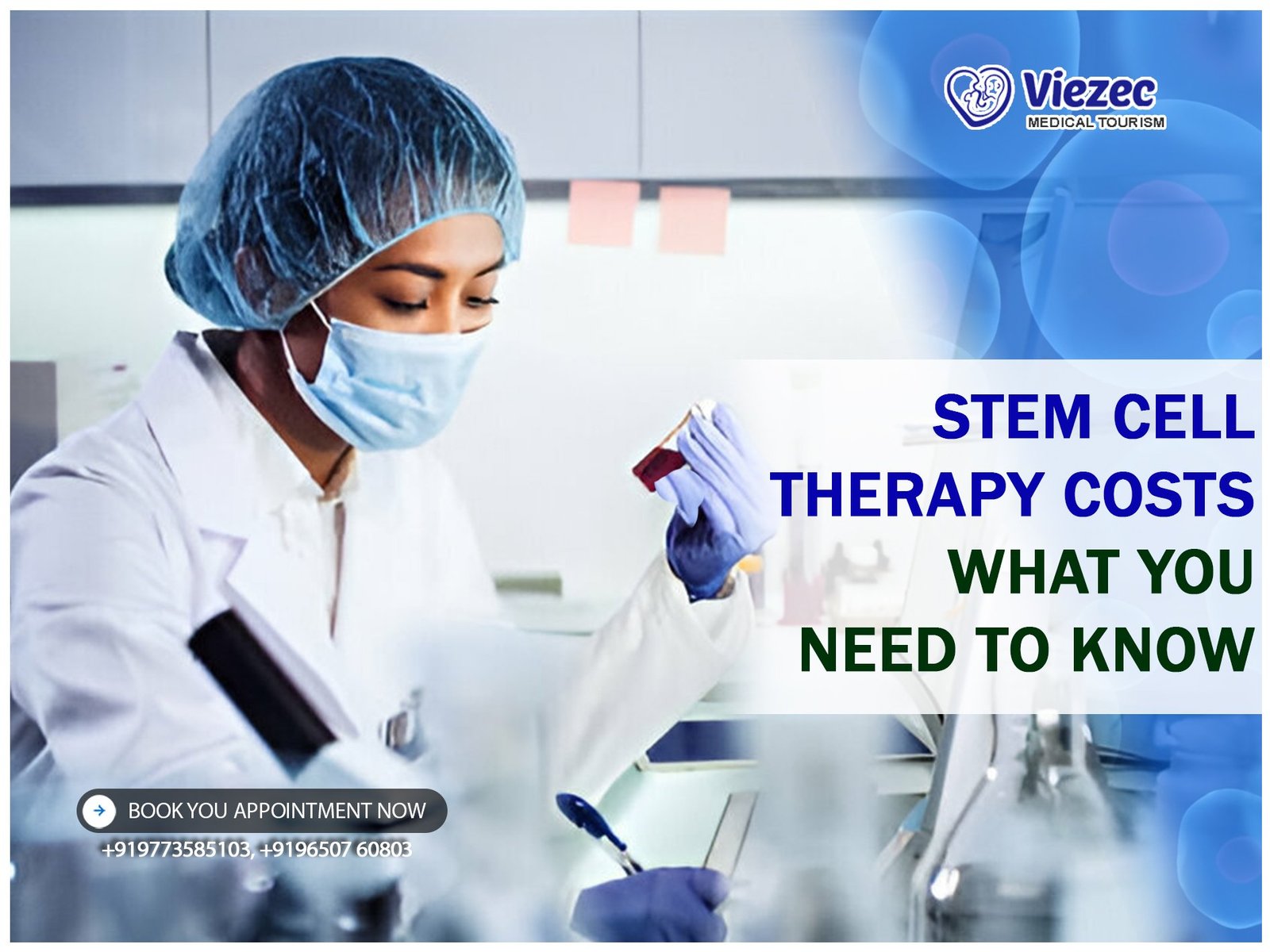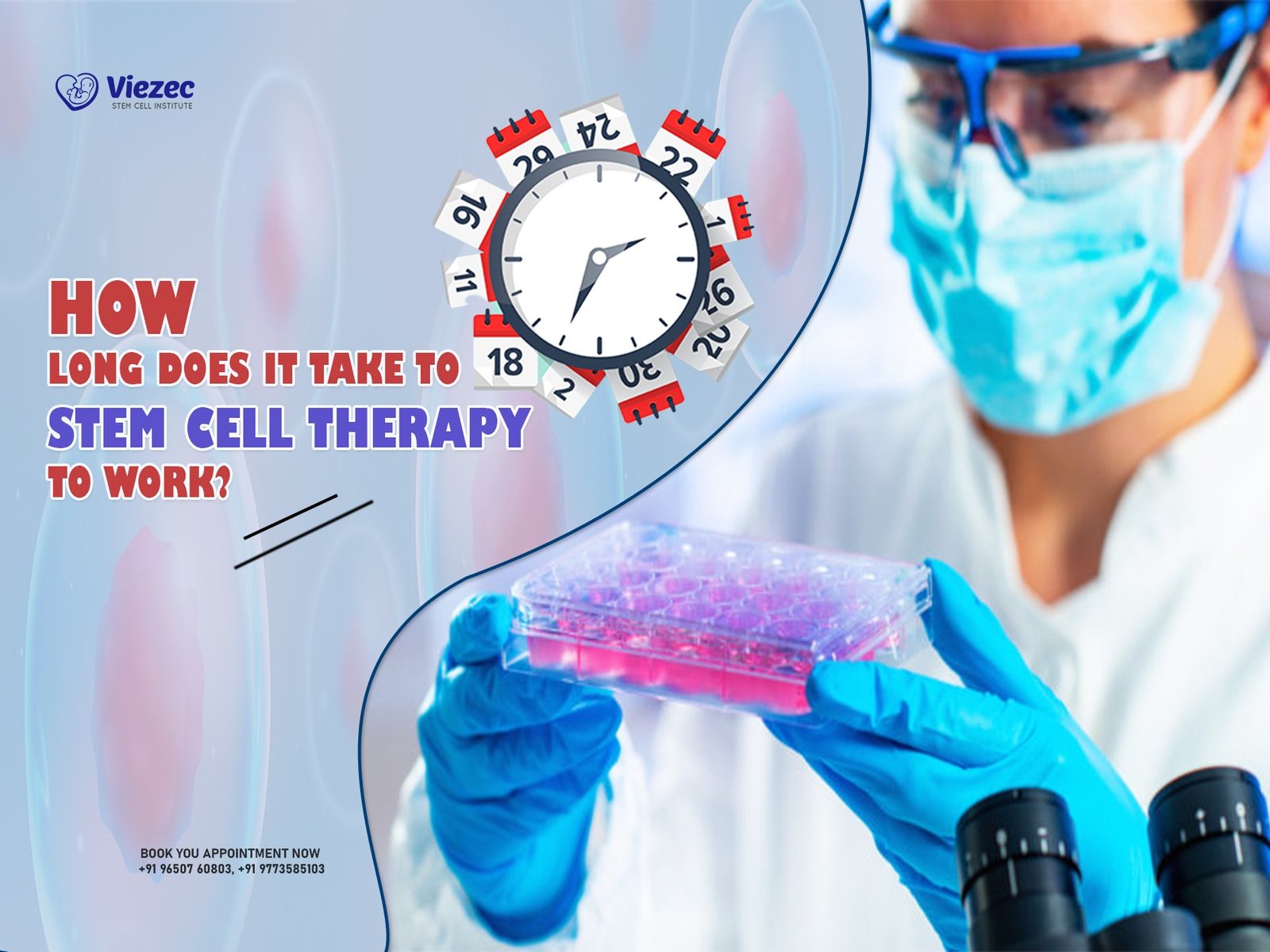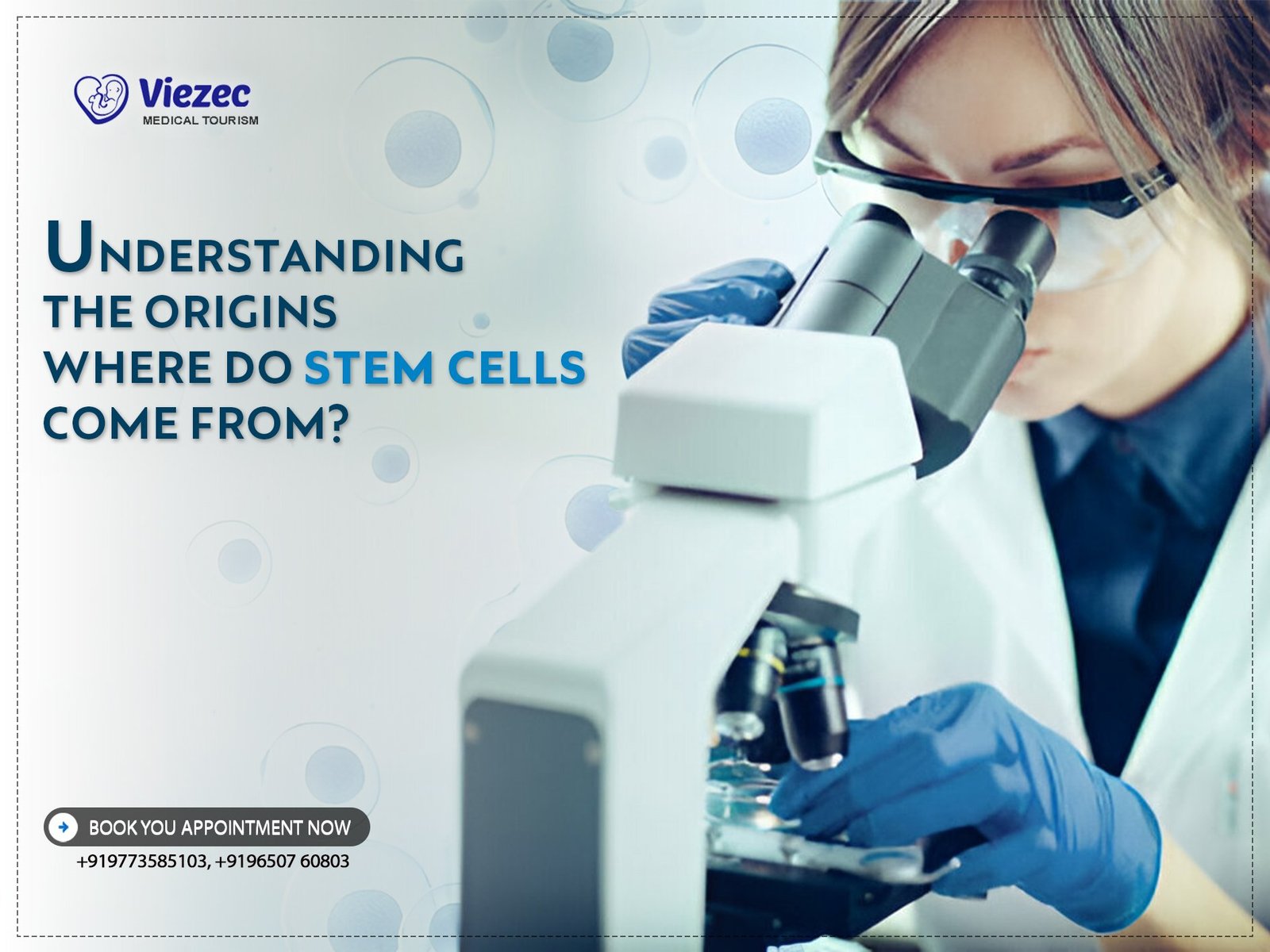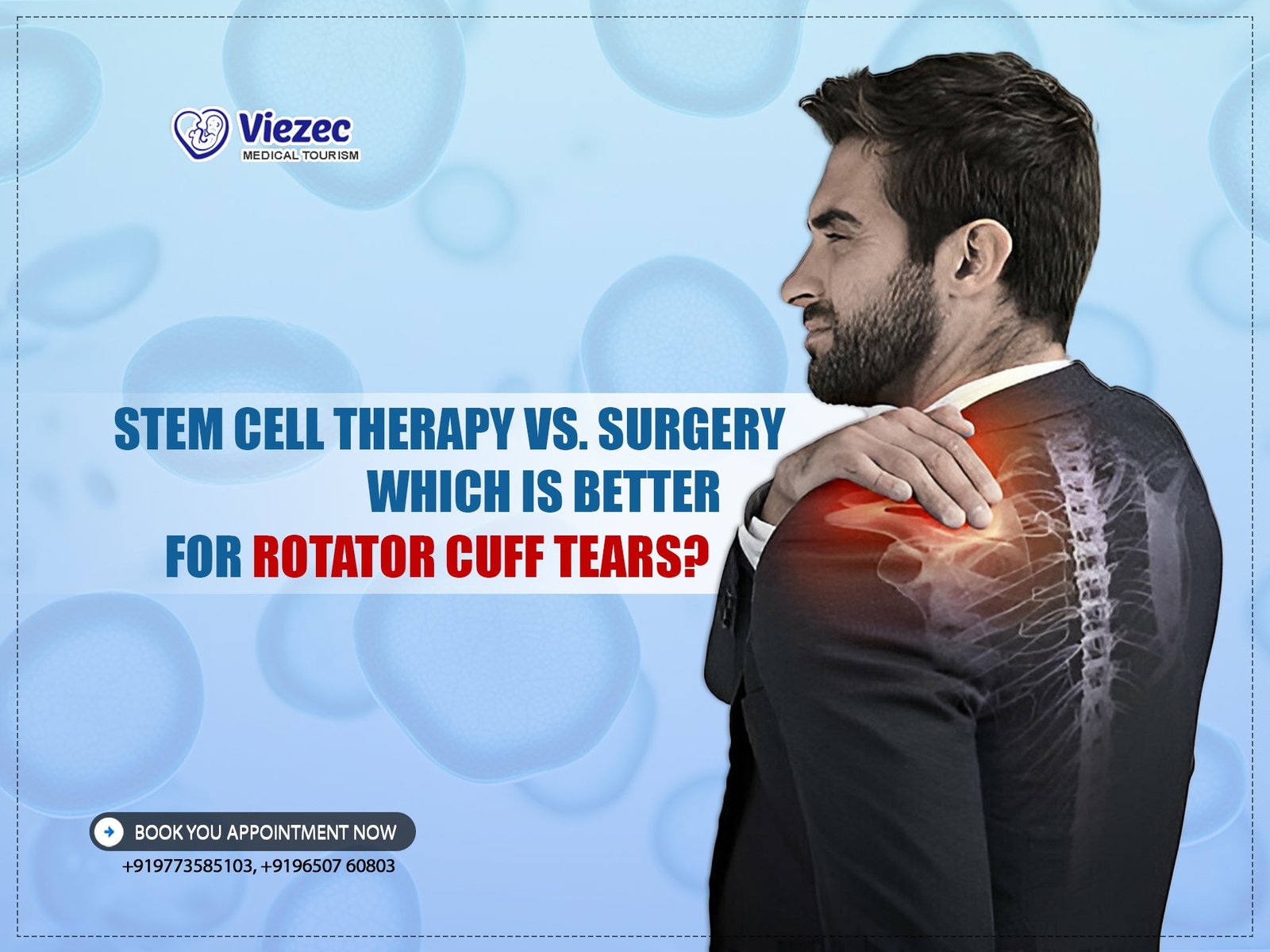Stem Cell Treatment Cost in India December 2025
Stem cell therapy is a groundbreaking medical approach that utilizes the body’s own regenerative potential to treat a wide array of diseases. By harnessing stem cells—unique cells capable of differentiating into various cell types—this therapy offers hope for conditions like Parkinson’s disease, spinal cord injuries, and diabetes. The global interest in regenerative medicine has surged, driven by its promise to repair damaged tissues and organs where traditional treatments fall short. As this field expands, understanding the financial implications becomes critical for patients considering this option. The costs of stem cell therapy can vary widely depending on multiple factors, making it essential to explore these expenses in detail.
Understanding Stem Cell Therapy
What is Stem Cell Therapy?
Stem cell therapy involves using stem cells to repair or replace damaged tissues, offering potential solutions for previously untreatable conditions. Stem cells come in various forms: embryonic stem cells, derived from early embryos; adult stem cells, found in tissues like bone marrow; and induced pluripotent stem cells, reprogrammed from adult cells. Each type has unique properties and applications. This therapy is commonly used to treat neurodegenerative disorders like Parkinson’s, orthopedic issues such as osteoarthritis, and chronic illnesses like diabetes. Its versatility stems from stem cells’ ability to regenerate and adapt, making them a cornerstone of regenerative medicine. As research advances, the scope of treatable conditions continues to grow, fueling both excitement and debate about its widespread adoption and accessibility across the globe.
How Stem Cell Therapy Works
The process of stem cell therapy begins with harvesting stem cells, either from the patient (autologous) or a donor (allogeneic). These cells are then cultivated in a lab to increase their numbers or enhance their properties before being transplanted into the patient. Administration methods vary, including direct injections into affected areas, such as joints, or intravenous infusions for systemic conditions. The goal is to stimulate repair or regeneration in damaged tissues, guided by the body’s natural healing mechanisms. This intricate process requires precision and expertise, as the success of the therapy depends on the quality of the cells and the accuracy of their delivery. While the science is complex, the outcome—restored function or reduced symptoms—drives its growing popularity among patients and medical professionals alike.
Factors Influencing Stem Cell Therapy Costs
Type of Stem Cell Therapy
The type of stem cell therapy significantly impacts its cost. Autologous treatments, using a patient’s own cells, avoid immune rejection but require expensive harvesting and processing, often ranging from $5,000 to $15,000. Allogeneic treatments, sourced from donors, may cost more due to donor screening and cell banking, sometimes exceeding $20,000. The stem cell type also matters—embryonic or induced pluripotent stem cells involve advanced lab techniques, driving up expenses compared to adult stem cells. Each approach has unique benefits, but the complexity of production and customization directly influences pricing. Patients must consider these differences when budgeting, as the choice between autologous and allogeneic therapy can dramatically shift the financial commitment required for treatment success.
Medical Condition Being Treated
The condition being treated plays a major role in determining stem cell therapy costs. Simple conditions like osteoarthritis might require localized injections, costing between $3,000 and $10,000, while complex disorders like multiple sclerosis or spinal cord injuries demand extensive procedures, pushing prices toward $20,000 or more. The severity and progression of the disease also factor in—chronic or advanced cases may need multiple sessions, increasing the total expense. For instance, autoimmune diseases often require systemic infusions, adding to the cost due to higher cell volumes and follow-up care. This variability reflects the tailored nature of stem cell therapy, where treatment plans are customized to the patient’s specific medical needs, making it essential to assess condition complexity when estimating financial requirements.
Geographical Location
Where you receive stem cell therapy dramatically affects its cost. In the United States, treatments can range from $10,000 to $50,000, driven by high healthcare costs and strict regulations. In contrast, countries like India offer similar therapies for $5,000 to $15,000, thanks to lower labor costs and less restrictive frameworks. Europe falls in between, with nations like Germany charging $15,000 to $30,000 based on advanced infrastructure. Affordable destinations often attract medical tourists seeking quality care at reduced prices, but variations in healthcare standards and regulatory oversight explain these disparities. Patients must consider travel expenses and local expertise alongside base costs, as geography shapes both accessibility and the overall financial burden of pursuing stem cell therapy abroad or domestically.
Clinic Reputation and Expertise
The reputation of a clinic or hospital directly influences stem cell therapy pricing. Renowned facilities with cutting-edge technology and experienced specialists often charge premiums, with costs reaching $20,000 to $40,000 for a single treatment. These institutions justify higher fees through proven success rates, state-of-the-art labs, and skilled staff trained in regenerative medicine. Lesser-known clinics may offer lower prices—sometimes under $10,000—but patients risk inconsistent outcomes or outdated methods. Expertise matters: a seasoned team can minimize complications and optimize results, adding value that reflects in the price tag. For those prioritizing quality, investing in a reputable provider may outweigh the temptation of cheaper alternatives, as the stakes of safety and efficacy in stem cell therapy are exceptionally high.
Additional Costs
Beyond the procedure itself, stem cell therapy involves additional expenses that can accumulate quickly. Pre-treatment evaluations, including imaging and lab tests, might add $1,000 to $5,000 to the bill. Post-treatment care, such as physical therapy or follow-up visits, can cost another $2,000 or more, depending on recovery needs. For international patients, travel and accommodation further inflate the total—expect $2,000 to $10,000 for a multi-week stay in a foreign country. These hidden costs often catch patients off guard, making it vital to budget comprehensively. Clinics may bundle some services, but extras like medications or complications can still arise. Understanding these factors ensures a realistic financial plan, preventing surprises that could derail treatment or recovery efforts.
Stem Cell Therapy Costs Around the World
United States
In the United States, stem cell therapy costs typically range from $10,000 to $50,000 per treatment, reflecting the country’s high healthcare expenses. For example, orthopedic injections might start at $5,000, while complex neurological therapies can exceed $30,000. Factors driving these costs include stringent FDA regulations, advanced medical infrastructure, and high labor fees for specialists. Many treatments remain experimental, meaning insurance rarely covers them, leaving patients to pay out of pocket. The U.S. offers cutting-edge options and top-tier clinics, but the financial barrier limits accessibility for many. Patients often weigh these costs against traveling abroad, where similar care might be available at a fraction of the price, highlighting the trade-off between convenience and affordability in the American healthcare system.
Europe
Europe presents a varied landscape for stem cell therapy costs, averaging $15,000 to $35,000 depending on the country. In Germany and Switzerland, known for medical innovation, prices often lean toward the higher end due to advanced facilities and rigorous standards. The UK, with its NHS framework, may offer lower costs—around $10,000 to $20,000—but access to private clinics drives prices up. The European Union’s strict regulatory environment ensures quality but increases expenses through compliance and testing requirements. Patients benefit from well-established healthcare systems, yet costs reflect the region’s economic diversity and differing levels of government involvement. For those seeking premium care, Europe balances quality and price, though it remains less affordable than emerging medical tourism hubs in Asia.
Asia
Asia has emerged as a cost-effective region for stem cell therapy, with prices ranging from $5,000 to $20,000. Countries like Thailand and South Korea offer competitive rates, but India stands out as a leader, providing treatments for as low as $4,000 to $15,000. Lower labor costs, favorable exchange rates, and growing expertise in regenerative medicine drive this affordability. India, in particular, combines high-quality care with prices far below Western standards, attracting patients globally. Asia’s regulatory frameworks vary, with some nations embracing stem cell therapy more readily than others, impacting availability and cost. For those seeking value without sacrificing competence, the region—especially India—offers a compelling option, reshaping the global landscape of regenerative medicine accessibility.
Stem Cell Therapy Costs in India
Why India?
India has become a global hub for medical tourism, particularly for stem cell therapy, due to its blend of affordability and quality. The country boasts a robust healthcare sector with internationally accredited hospitals and skilled doctors trained in cutting-edge techniques. Treatments that cost tens of thousands in the U.S. or Europe are available here at a fraction of the price, often between $4,000 and $15,000. India’s lower cost of living and competitive medical market keep expenses down without compromising standards. Patients also benefit from shorter wait times and personalized care, making it an attractive destination. As regenerative medicine gains traction, India’s reputation as a cost-effective, high-quality option continues to grow, drawing thousands seeking viable alternatives to expensive Western treatments.
Average Costs in India
In India, stem cell therapy costs are remarkably lower than in Western countries. For instance, orthopedic treatments like knee osteoarthritis range from $4,000 to $7,000, compared to $10,000 to $20,000 in the U.S. Neurological conditions, such as Parkinson’s or spinal injuries, might cost $8,000 to $15,000, while similar therapies elsewhere exceed $30,000. These prices include harvesting, processing, and administration, often with basic follow-up care bundled in. India’s affordability stems from efficient healthcare delivery and lower operational costs, not inferior quality. Patients can access advanced facilities and experienced specialists at these rates, making it a standout option. This cost disparity highlights why India is a go-to destination for those seeking effective stem cell therapy without the financial strain of Western pricing models.
Top Clinics and Hospitals
India hosts several top-tier institutions for stem cell therapy, such as AIIMS in Delhi, Fortis Healthcare, and Viezec in Delhi. These centers are equipped with modern labs and staffed by specialists with global training, offering treatments for conditions ranging from autism to degenerative joint diseases. Success rates are competitive, with patient testimonials often praising both outcomes and affordability. For example, StemRx has gained attention for its innovative approaches and high satisfaction rates, while Fortis combines stem cell therapy with comprehensive care plans. These facilities adhere to international standards, ensuring safety and efficacy. Choosing a reputable clinic in India means accessing world-class treatment at a fraction of the cost, backed by a track record of successful interventions and satisfied patients.
Advantages of Choosing India
Opting for stem cell therapy in India offers significant advantages, starting with cost savings—patients can save 60-80% compared to Western nations without sacrificing quality. The country’s medical infrastructure includes state-of-the-art technology and highly trained doctors, many of whom have international experience. English-speaking staff and tailored patient care enhance the experience for global visitors. India’s regulatory environment supports stem cell research and application, ensuring treatments are both innovative and accessible. Beyond finances, the availability of holistic post-treatment support and shorter wait times add value. For those traveling, the cultural richness and affordable accommodations make the journey worthwhile. India delivers a rare combination of excellence, affordability, and convenience, positioning it as a premier choice for stem cell therapy seekers worldwide.
Financing Stem Cell Therapy
Insurance Coverage
Insurance coverage for stem cell therapy remains limited globally, as many treatments are classified as experimental. In the U.S., most insurers exclude it, forcing patients to pay $10,000 to $50,000 out of pocket. Some European countries, like Germany, offer partial coverage for approved therapies, reducing costs by $5,000 to $10,000, though full reimbursement is rare. In India, local insurance seldom covers it, but the lower base price—$4,000 to $15,000—eases the burden. A few private insurers worldwide are beginning to include specific treatments, like those for osteoarthritis, if deemed medically necessary. Patients should check policies carefully and consult providers, as coverage varies by country and insurer. For now, self-funding remains the norm, pushing many to explore alternative financing options.
Payment Plans and Options
To ease the financial load, many clinics offer payment plans or financial assistance. In the U.S. and Europe, installment options might spread costs over months or years, with monthly payments of $500 to $2,000 depending on the total. Indian clinics, with lower base prices, often provide flexible plans starting at $200 monthly, making therapy more manageable. Crowdfunding platforms like GoFundMe have also become popular, with patients raising thousands by sharing their stories online. Some facilities partner with medical loan providers, offering low-interest financing. These options vary by clinic, so researching terms and eligibility is key. For those facing high costs, combining payment plans with personal savings or external support can transform an intimidating expense into a feasible investment in health.
Cost-Saving Tips
Saving on stem cell therapy starts with thorough research—compare clinic prices, success rates, and patient reviews to find value. Medical tourism to countries like India can slash costs by 50-80%, even factoring in travel, which might add $2,000 to $5,000. Booking treatments during off-peak seasons could yield discounts, especially in popular destinations. Ask clinics about bundled packages that include pre- and post-treatment care to avoid surprise fees. Avoid unproven providers offering suspiciously low rates, as quality matters more than savings in this field. Consulting multiple specialists for quotes and exploring group rates for repeat treatments can also help. By planning strategically and prioritizing reputable yet affordable options, patients can access life-changing therapy without breaking the bank or compromising on safety.
Future of Stem Cell Therapy Costs
Market Trends
The growing demand for stem cell therapy is reshaping its cost landscape. As more patients seek regenerative solutions—projected to rise 15% annually—economies of scale may reduce prices, particularly in competitive markets like India. However, in high-regulation regions like the U.S., costs might stay elevated—$20,000 to $50,000—due to compliance burdens. Over the next decade, experts predict a two-tier market: premium treatments in advanced nations and affordable options in emerging hubs. Increased investment in research, nearing $10 billion globally, could accelerate cost declines if breakthroughs emerge. Patient awareness and advocacy will also pressure providers to balance profit with accessibility, suggesting a future where stem cell therapy becomes both more widespread and financially attainable for diverse populations.
Final Thoughts
Exploring stem cell therapy requires weighing costs against quality and safety. Destinations like India offer a compelling blend of affordability and expertise, making them worth considering for budget-conscious patients. However, no matter the location, thorough research into clinics, regulations, and outcomes is non-negotiable. The potential of this therapy to transform lives is immense, but so is the need for careful planning. As costs evolve with technology and demand, opportunities will grow, but today’s patients must navigate the current landscape thoughtfully. Prioritize reputable providers and realistic budgets to maximize benefits while minimizing risks. With the right approach, stem cell therapy can be a viable, life-changing option for those willing to explore its global possibilities.
Make and informed Decision
Have you or someone you know undergone stem cell therapy? Share your experiences or questions in the comments below—we’d love to hear your insights! For personalized advice, consult a medical professional to tailor this information to your needs. The journey to regenerative medicine is unique for everyone, and expert guidance can make all the difference. Stay informed, ask questions, and take the next step toward understanding your options.
For more details or consultations, reach out at info@viezec.com. Your journey to informed care starts here!









